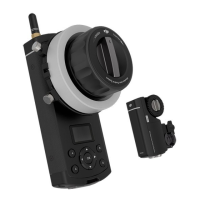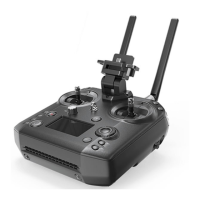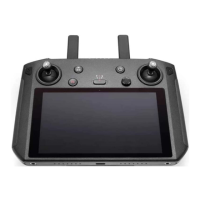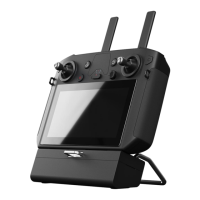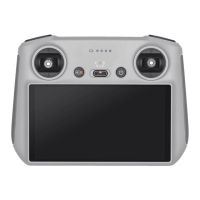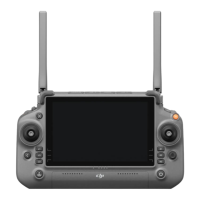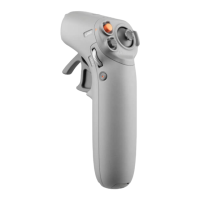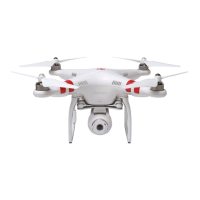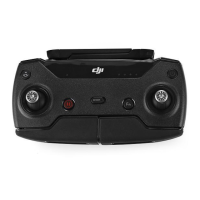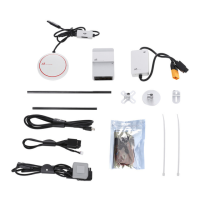
Do you have a question about the dji A3 and is the answer not in the manual?
| hovering accuracy (vertical) | ±0.5 m |
|---|---|
| hovering accuracy (horizontal) | ±2 m |
| max wind resistance | 10 m/s |
| max yaw angular velocity | 150°/s |
| max pitch angle | 35° |
| max ascent velocity | 6 m/s |
| max descent velocity | 6 m/s |
| power consumption | Max 21 W (Typical Value: 0.41 A @ 51 V) |
|---|---|
| operating temperature | 14° to 113° F (-10° to 45° C) |
Explains how to search for keywords and navigate topics within the manual.
Covers document printing, manual usage, and explains the legends used.
Provides essential information and tutorials for preparing the A3/A3 Pro for flight.
Overview of the DJI A3 series flight control system's capabilities and design.
Details the core modules and how the A3/A3 Pro system functions.
Highlights the features and details the ports of the flight controller module.
Illustrates and labels the physical ports on the flight controller.
Details the GPS-Compass Pro module's function, ports, and usage requirements.
Describes the PMU module for power and the LED module for status indication.
Details the IMU Pro module's sensors, calibration, and mounting orientation.
Provides an overview of the flight control system installation procedure.
Covers necessary equipment, airframe selection, and preparation steps for installation.
Details supported remote controller systems, ESCs, and battery types for the A3 series.
Covers downloading and installing the DJI Assistant 2 software for configuration.
Instructions for mounting the flight controller onto the aircraft, including orientation and placement.
Instructions for mounting the GPS-Compass Pro and LED modules onto the aircraft.
Instructions for mounting the PMU and IMU Pro modules onto the aircraft.
Guidelines for connecting the flight control system to the airframe and its components.
Explains how to connect different types of receivers like DJI Lightbridge 2.
Details connections for DR16, S-Bus receivers, and ESCs to the flight controller.
Instructions for connecting the battery to the PMU and flight controller.
Information on connecting optional DJI devices like Intelligent Landing Gear.
Details connections for D-RTK and Zenmuse Z15 Gimbal to the flight controller.
Guides users through parameter configuration using DJI Assistant 2 and video tutorials.
Step-by-step guide for calibrating the compass to ensure accurate flight performance.
Details the different flight modes (P, A, F, M) and their operational characteristics.
Covers manual take-off, remote controller operations, and manual landing procedures.
Explains how to use Course Lock and Home Lock modes via the remote controller.
Details Return to Home (RTH), Failsafe RTH, Smart RTH, and low battery warnings.
Covers low battery failsafe for different battery types and attitude control during motor failure.
Explains height and distance limits, and how they form a restricted flight cylinder.
Details No-Fly Zones, including airport and restricted area definitions and warnings.
Guides on downloading the DJI GO app and using Beginner Mode with restricted flight limits.
Instructions for performing automatic take-off and landing using the DJI GO app.
Explains RTH functions like Smart RTH and Low Battery RTH within the DJI GO app.
Details using Course Lock, Home Lock, POI, and Waypoints via the DJI GO app.
Explains how LEDs on modules indicate the status of the triple modular redundancy system.
Checklist for ensuring correct hardware mounting, connections, and LED status.
Checklist for verifying aircraft and controller parameters in DJI Assistant 2.
Describes LED indicators for various system states and flight conditions.
Provides solutions for common problems like LED errors, calibration failures, and battery detection.
Lists built-in functions, flight modes, RTH modes, and safety features.
Details DJI GO app features, intelligent flight modes, and supported DJI equipment.
Covers peripheral support, operating systems, SDK, power ratings, voltage, temperature, and weight.
Details flight performance metrics like hovering accuracy, wind resistance, and velocity limits.
